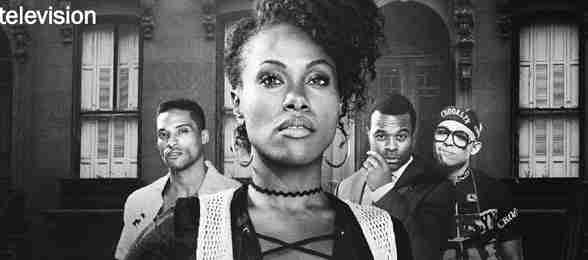Spike Lee has turned his hit movie, “She’s Gotta Have It,” from the 1980s into a well-received, modern-day Netflix series.
By MARK DAWIDZIAK
Courtesy of The TV Blog
Cleveland, Ohio – TV executives are great believers in that line about everything old being new again. In the past year alone, we have seen new incarnations of “The X-Files,” “Twin Peaks,” “Star Trek,” “S.W.A.T.” and “Will & Grace.”
Even the idea of remakes isn’t new. It’s a practice that runs through decades of Hollywood history. So the question always comes down to whether you can make an old movie or TV show feel new.
Can you fashion something wonderfully fresh, relevant, energetic, contemporary, intriguing and, well, new out of something old?
Spike Lee has done just that by reaching all the way back to the beginning of his career and brilliantly re-imagining the groundbreaking 1986 film that put him on the cinematic map, “She’s Gotta Have It.” Netflix premiered his bold and compelling 10-episode series version on Thanksgiving Day, Nov. 23.
Directed, produced and written by Lee, the film starred Tracy Camilla Jones as Nola Darling, an independent, free-spirited Brooklyn, New York, woman attracted to three very different men (including the humorous Mars played by Lee).
But the Brooklyn of 2017 is a much different place than the Brooklyn of 1986. The technology, pop culture and political climate are very different. The world is different.
And the splendidly textured series version of “She’s Gotta Have It” recognizes these changes in every scene. Indeed, Lee is so willing to fully embrace what a contemporary Brooklyn lifestyle would involve, he completely avoids getting trapped in the past.
The show’s director, executive producer and creator, Lee is not only updating this concept; he’s expanding, enlarging and deepening it, all while staying true to the film’s essential themes. There are, without question, some changes in attitudes and approaches, and all of them are for the good.
At 60, Lee has lost none of his desire to sprint along the edge, taking chances with dialogue and visual storytelling as he makes his way through challenging territory. But there’s a sophistication to this very adult comedy-drama mix that suits his first attempt at a scripted series.
Ten episodes, as opposed to a 90-minute movie, sure allow for a great deal of world-building, and the veteran filmmaker takes full advantage of all that narrative elbow room.
Yes, there are times when excess gets the better of this series. Pace occasionally becomes a problem, as we move from episode to episode that could be more tightly edited. yet the sheer vitality of the performances keep us fully engaged.
And perhaps the most delightful reason you gotta catch up with “She’s Gotta Have It” is the work of series star DeWanda Wise.
Rarely off-camera for very long, she is asked to carry the vast majority of the dramatic load, constantly moving from an encounter with one character to another to another. If her shoulders start to sag under that considerable weight, the entire series collapses. Yet she’s more than equal to the task of making certain that we’re drawn to Brooklyn artist Nola Darling, glad to be in her marvelous company throughout the entire run of the first season.
As in the film, Nola has three objects of affection. Wise’s Nola professes her love for protective and intellectual investment banker Jamie Overstreet (Lyriq Bent), hunky and cultured model Greer Childs (Cleo Anthony) and funny Mars Blackmon (Anthony Ramos putting his own distinctive spin on a role so identified with lee).
Nola, in her late 20s and living in the gentrified Fort Greene neighborhood of Brooklyn, might have it all, or she might be in danger of losing everything. Some might say it’s a full life. Some might say it’s empty. Nola doesn’t care. She’s determined to live life on her terms.
“I would like you to know the only reason I’m doing this is because folks think they know me,” Nola tells us. “They think they know what I’m about. The truth is, they don’t know me. . . . I consider myself abnormal. But who wants to be like everybody else? Not I. . . . some people call me a freak, and I hate that word. I don’t believe in it, or, better yet, I don’t believe in one-word labels.”
If you like, she seems to be saying, stick around and really get to know me. Don’t judge. Don’t label.
Then what should you do? That’s easy. Just stick around, because you’ll like getting to know her.













No Comment